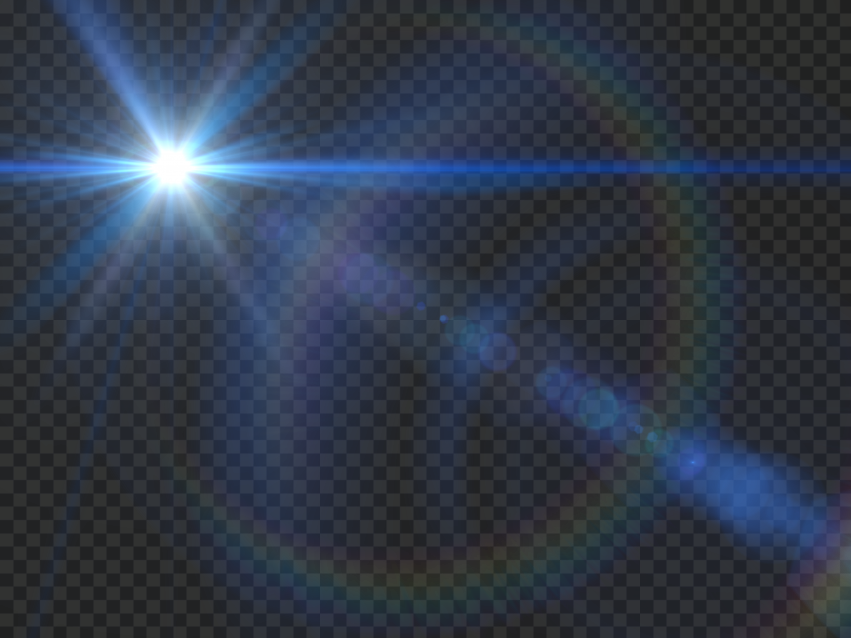Table of Contents
What is Lens Flare Photography?
Lens flare is a photographic effect that occurs when bright light enters the camera lens and scatters inside, creating a series of circles or lines of light in the image. These circles or lines can add an interesting and artistic element to a photo and are often used intentionally by photographers to create a certain mood or style.
Lens flare can be caused by a number of factors, including shooting directly into the sun, using a wide aperture, or having a dirty or scratched lens. In order to achieve the desired effect, some photographers will deliberately shoot into the sun or use a lens with a special coating that enhances the lens flare.
Lens flare photography can be used in a variety of genres, including landscape, portrait, and fashion photography. When used appropriately, lens flare can add a dreamy or romantic quality to a photo, or enhance the dramatic effect of a scene. However, it’s important to use lens flare sparingly and judiciously, as too much can detract from the overall quality of the photo.
Lens Flare Photography: Techniques and Tips
If you’re interested in experimenting with lens flare photography, here are some techniques and tips to keep in mind:
1. Find the right light
Lens flare occurs when light enters the lens at a certain angle, so it’s important to find a light source that will create the effect. Shooting towards the sun or a strong artificial light source like a streetlamp can work well.
2. Use a wide aperture
A wide aperture allows more light to enter the lens, increasing the chances of lens flare. Use a low f-stop number to create a shallow depth of field and increase the amount of light entering the lens.
3. Clean your lens
A dirty or scratched lens can actually detract from the lens flare effect, so it’s important to make sure your lens is clean and in good condition.
4. Use a lens hood
A lens hood can help prevent unwanted flare and ghosting, but you may need to remove it or adjust its position to achieve the desired effect.
5. Experiment with composition
Lens flare can add an interesting element to a photo, but it’s important not to let it overpower the rest of the image. Experiment with different angles and compositions to find the right balance.
6. Shoot in RAW
Shooting in RAW format will give you more flexibility in post-processing, allowing you to adjust the exposure and color balance to achieve the desired effect.
7. Edit carefully
While lens flare can add an interesting and artistic element to a photo, it’s important not to overdo it in post-processing. Use editing software like Lightroom or Photoshop to adjust the exposure and color balance, but be careful not to let the lens flare overwhelm the rest of the image.
How to Achieve the Perfect Lens Flare Shot?
To achieve the perfect lens flare shot, use a lens known for producing good lens flare effects, shoot during the golden hour, experiment with composition, use manual mode, focus carefully, and edit the image carefully. Remember to have fun and experiment!
Achieving the perfect lens flare shot is often a matter of experimentation and creativity, but here are some tips that can help you get there:
- Use the right lens: Some lenses are more prone to producing lens flare than others, so consider using a lens that is known for producing good lens flare effects, such as a vintage or specialty lens.
- Shoot at the right time of day: Shooting during the golden hour (the hour just after sunrise or just before sunset) can help you capture warm, soft light that is perfect for lens flare photography.
- Use a strong light source: Shooting toward the sun or a strong artificial light source can help you create a strong lens flare effect.
- Experiment with composition: Lens flare can add an interesting element to your composition, so try different angles and positions to find the perfect balance.
- Use a lens hood: A lens hood can help prevent unwanted flare and ghosting, but you may need to remove it or adjust its position to achieve the desired effect.
- Shoot in manual mode: Shooting in manual mode gives you more control over the exposure settings, allowing you to adjust the aperture, shutter speed, and ISO to create the perfect lens flare effect.
- Focus carefully: When shooting toward a strong light source, it can be difficult for your camera to focus properly. Consider using manual focus to ensure that your subject is in direction and the lens flare effect is where you want it to be.
Post-process carefully: While it’s important to edit your images carefully to achieve the desired effect, be careful not to overdo it with post-processing. Use editing software like Lightroom or Photoshop to adjust the exposure and color balance, but be mindful of preserving the natural look of the lens flare effect.
Lens Flare Post-Processing Techniques
Lens flare post-processing techniques can be a great way to enhance and refine the lens flare effect in your photos. From adjusting the exposure and color temperature to adding a vignette effect or using a gradient filter, there are a variety of techniques you can use to make your lens flare shots stand out. I have listed here some important post-processing tips:
Adjust exposure:
Lens flare can sometimes cause your image to appear overexposed or underexposed. Adjusting the exposure in post-processing can help balance the light and dark areas of the image.
Adjust contrast
Increasing the contrast in your image can help enhance the lens flare effect and make it more prominent.
Adjust color temperature
Lens flare can sometimes cause your image to have a warm or cool color cast. Adjusting the color temperature can help balance the colors in your image.
Add vignetting
Adding a vignette effect around the edges of your image can help draw attention to the lens flare effect in the center.
Use a gradient filter
Using a gradient filter in post-processing can help balance the exposure between the bright areas of the image and the darker areas.
Use a soft brush
If you need to adjust the exposure or color balance in a specific area of the image, using a soft brush can help you make precise adjustments without affecting the rest of the image.
Conclusion:
Lens flare photography can add a unique and dynamic element to your photos. By experimenting with different lenses, shooting angles, and post-processing techniques, you can create stunning images that capture the beauty of natural light. Remember to be patient, practice, and have fun while exploring the world of lens flare photography.
- AI’s Impact on Personalization, Analytics, and Retention in Gaming - April 12, 2024
- The Marketer’s Marathon: Long-Distance Strategies for Sustained Traffic Growth - March 29, 2024
- What Is MagSafe for iPhone? A Quick Guide - March 18, 2024





